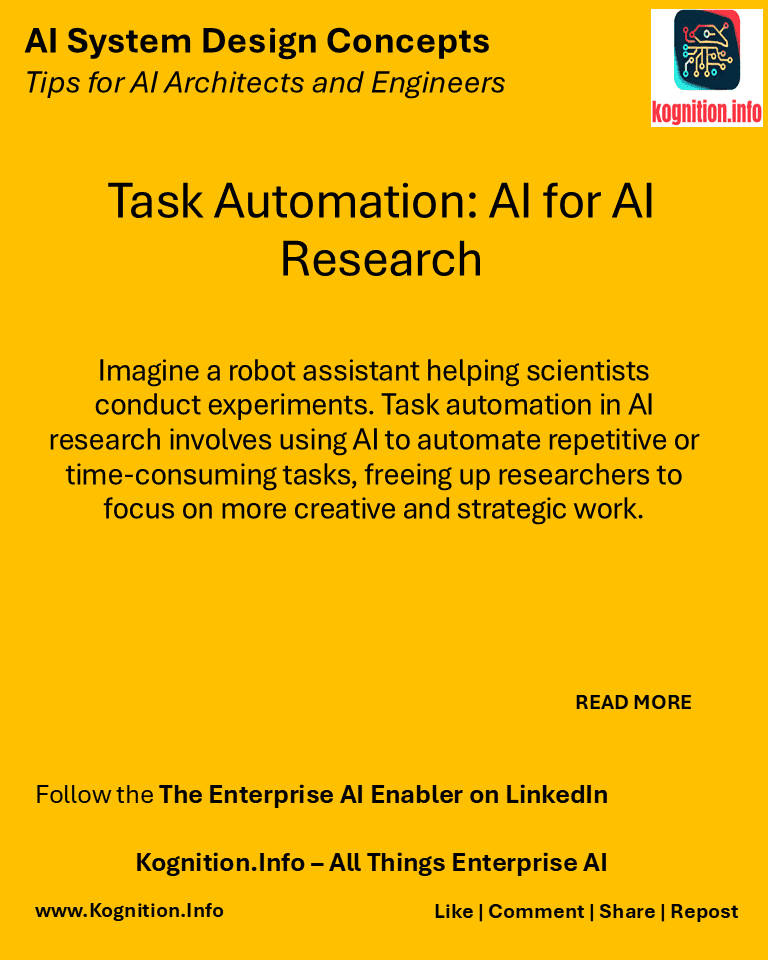
Imagine a robot assistant helping scientists conduct experiments. Task automation in AI research involves using AI to automate repetitive or time-consuming tasks, freeing up researchers to focus on more creative and strategic work.
Use cases:
- Automating data preprocessing: Using AI to clean, transform, and prepare data for model training.
- Hyperparameter optimization: Employing AI algorithms to automatically tune hyperparameters and find optimal model configurations.
- Generating synthetic data: Using AI to create synthetic data for training or augmenting existing datasets.
- Analyzing research papers: Developing AI tools to summarize, categorize, and extract key information from research papers.
How?
- Identify automatable tasks: Analyze your research workflow and identify tasks that can be automated.
- Select AI tools and techniques: Choose appropriate AI algorithms and tools for the specific automation task.
- Develop automation scripts or workflows: Create scripts or workflows that automate the execution of tasks.
- Integrate with research tools: Integrate AI automation tools with your existing research environment and tools.
Benefits:
- Increased efficiency: Automates repetitive tasks, saving time and resources.
- Improved productivity: Allows researchers to focus on more creative and strategic work.
- Reduced errors: Minimizes the risk of human errors in repetitive tasks.
Potential pitfalls:
- Over-reliance on automation: Maintain human oversight and critical thinking in the research process.
- Bias in automation: Ensure that AI automation tools do not introduce biases into the research.
- Job displacement: Address potential concerns about job displacement due to AI-driven automation.
